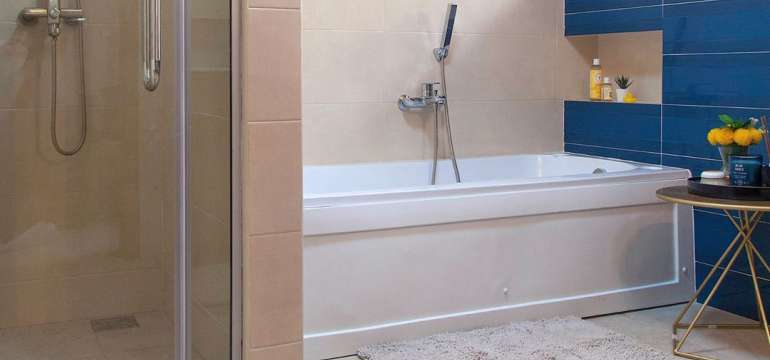Are you getting ready to tackle a major bathroom remodel? Many people wish they could add a new and more luxurious shower to their bathroom, but they need a little help with the technical details. For example, what is the right shower drain pipe size?
If you need a little guidance on how to best install a shower drain pipe that will work efficiently and keep your shower from overflowing, there are a few things you need to know. Learn more about the building codes, the construction of your shower, and more with this complete guide.
What Size Drain Pipe for a Shower?
Bathroom remodels, and new construction homes are a common thing in the building and home improvement industry. Installing a new shower is a must-have item in these new areas, so it makes sense that many people are wondering what the standard size pipe is for a shower drain. Before we dive into the specifics of exactly what the building codes require, it is important to understand why you need a larger shower drain pipe size.
Many contractors try to get away with using a small pipe size of one-and-a-half inches. Unfortunately, this may not be a sufficient size to keep your shower from flooding and overflowing onto your bathroom floor. A few instances of flooding can spell major problems for your flooring and subflooring, so you want to do everything possible to prevent this.
Showers naturally have a very low threshold for flooding because they lack the high walls of a bathtub or a shower-tub combination. It is imperative to use a larger shower drain pipe size to keep the water flowing into your pipes instead of onto the surrounding floor.
What is the standard size pipe for a shower drain then? Most shower pans or trays are going to be fitted with a two-inch pipe. This is usually sufficiently large enough to keep even the shallowest shower tray from overflowing. As a result, most building codes will require this size drain pipe for every shower.
Keep in mind that the local building codes and shower drain size code for your area may be slightly different. Some states and cities only require a 1.5-inch shower drain pipe, but you may still want to consider going with the two-inch size. For most standard shower trays and pans, they are already outfitted for a two-inch pipe, so there may not be much of an option.
What if I Want a Smaller Drain Size?
If your building code only requires a 1.5-inch drain pipe size and you do not want to go with the two-inch that most shower trays are built to accommodate, you still have other options. Some plumbing experts will tell you that you can simply reduce the pipe size. All you have to do is glue in a reducer to make the opening slightly smaller.
Keep in mind how much water you have spraying into the shower before you decide to go with the bare minimum. For example, many showers are now being built with multiple heads and water that sprays from all angles. There may simply be too much water for a 1.5-inch drain to keep up with.
If you have any concerns about whether your shower would be okay with a small drain pipe size, make sure to consult a professional first. It is better to get their expert opinion upfront than to install a drain size that is too small, and that can cause major issues in your bathroom.
What About Shower and Tub Combinations?

While many master bathroom remodels have beautiful walk-in showers, some people are still interested in installing a new shower and tub combination. They may wonder whether this two-inch shower drain pipe size still applies to their unique situation. The truth is that things do look a little different when you are looking at this sort of combination.
This is where the local building codes that specify smaller drain sizes come in handy. Builders and handy homeowners can often get away with installing smaller drains in these combinations. The tub itself is naturally designed to hold more water, so the drain can be smaller without fear of the water overflowing and flooding the rest of the bathroom.
Many people prefer to have a slightly smaller drain in this type of situation. A 1.5-inch drain is usually sufficient enough to keep the water moving through the shower without allowing it to get too backed up. However, it will allow some extra water to splash around your feet and the bottom of the tub while showering.
If you don’t like the idea of having soapy water at your feet while you shower, it is advised that you still opt for the larger drain size. You can install a two-inch shower pipe drain in a shower-tub combination if you want the bottom of the tub to be relatively free of excess water.
Plan Ahead for Your Shower Drain
While you may be able to get away with going for the bare minimum, most plumbing experts recommend that you stick with the standard two-inch drain size pipe for your shower. Consider how much water flow you will have in your shower and the construction of the shower pan or tub to determine what is best for your home. When in doubt, contact an expert to help you flesh out the details necessary to make your new shower successful!
- If You Have No Hot Water Pressure, Here’s What You Should Do - December 28, 2021
- What is the Right Shower Drain Pipe Size? - January 25, 2020
- Wet Vent Plumbing, What Is It? How Do You Utilize It? - November 17, 2019

